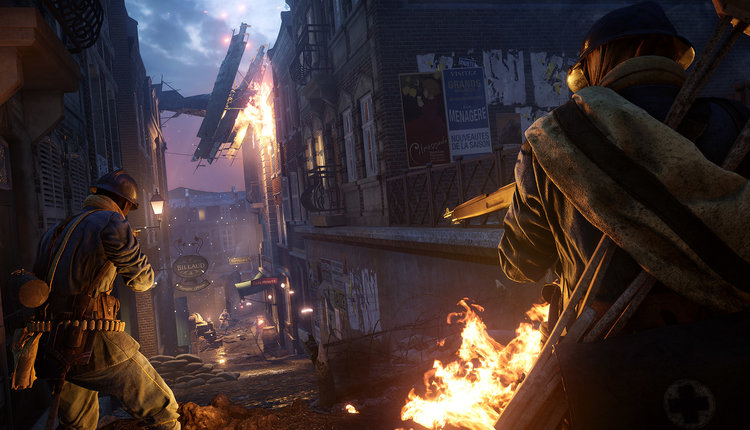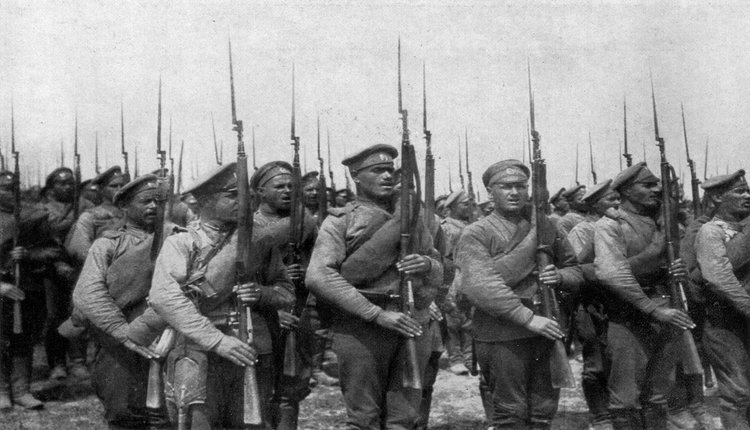War in a Time of Games: Battlefield 1
The First World War is something rarely discussed outside of literature. Games are taking the first steps in representing it in a different medium with the likes of Battlefield 1 giving players a chance to experience the brutality and barbarism that dominated Europe in the early Twentieth Century. But how well does this game represent the first great global conflict? What makes Battlefield 1 both irresistible and problematic in its depiction of history?
When I first dropped into a multiplayer match in Battlefield 1 all seemed calm. A chill wind blew pregnant clouds over a fortress on the Italian coastline. Thirty players spawned in and the whistles blew. Following several tanks, armoured cars and horses we charged uphill toward a distant villa seeking to capture the strategic point. Shells began to fall as the Austro-Hungarian snipers and machine-gunners opened up. Dirt showered down along with the bodies of those unfortunate to have been hit by shells or bullets. Some of my fellow soldiers split off seeking cover in the undergrowth or behind walls. A few of us pressed on trusting the tanks to provide enough cover. We crested the hill and there, a hundred metres away, stood the villa. Then, in the distance, the crack of a rifle. I dropped into the mud, a bullet in my brain and a look of surprise on my face.
Ten seconds later I was up and running again having respawned at a safe distance from the frontline. That’s the Battlefield 1 experience. Often in first-person-shooters set during wartime there is a great deal of control offered to the player. Aim the gun, pull the trigger and down goes your opponent. They call in a bombing run or an attack helicopter you run and hide. Simple problems with easy answers. But where Battlefield 1 and the Battlefield series in general differs is in stripping the player of all but the most basic elements of control.
Of course, you can hide in the corner of a house taking pot-shots out of the window but it’s very likely that a passing plane or tank will decide to take a pot-shot as well levelling your sanctuary. Victory is practically assured once all the flags have been captured and held, right? Wrong once one team is losing by a certain amount the game will give them a handicap often in the form of an airship, armoured train or battleship. Victory and survival are never assured in Battlefield 1 just as they were never assured in the First World War.
In 1918 Germany and the Austro-Hungarian Empire were starving. The Allies: Britain, Italy, France, and the USA were pushing toward the German border. Then the Germans began the Spring Offensive or Kaiserschlacht. It was the largest land seizure since the war had begun four years previously. It was eventually pushed back leading to the November Armistice but for over a month defeat seemed certain for the Allies. Men died in their droves on both sides from gas attacks, artillery bombardments and machine-gun fire. The vicious fighting continued up until 11 November and men tragically died in the final hours of that morning.

The single-player campaign of Battlefield 1 recognises these tragedies. It pays homage to the Harlem Hell Fighters, a nearly all-black division of the US Army, as well as the little acknowledged fronts in northern Italy and North Africa but Battlefield 1 forgets a great deal as well. The First World War was a French, German and Russian war. There were a huge number of countries involved but the losses were the greatest for the three aforementioned countries. Battlefield 1 mostly forgot about these countries in its first year of release. Developer DICE’s reasoning probably has to do with localisation as a great deal of English speakers are unlikely to play a game voiced entirely in languages they don’t understand. DICE managed to bottle the fear and violence of the Great War but dropped the ball when it came to accuracy.
Players can play as the Germans in multiplayer but not in the campaign. Why? A common theory is that the First and Second World Wars are too similar. That is true to a certain degree. They share similar names, participants, and reasoning. Compared to the German offensive of World War Two the offensive of World War One pales in comparison. Kaiser Wilhelm entered the war in support of his ally the Austro-Hungarian Empire. He saw it as a chance to expand the borders of his empire. Through a barely navigable mess of treaties, alliances and agreements Europe was at war by 1914 and Germany was blamed come 1918. Despite the untold destruction wrought by the First World War the blame for it does not lie squarely on Germany’s doorstep as opposed to the Second World War where nearly all the blame can be placed on the German Nazi party.

DICE has rectified Battlefield 1’s representation of World War One slightly. Downloadable content in the form of multiplayer maps allows players to play as both the French and Russians at varying points in the war as well as examining the disastrous Gallipoli Campaign in 1915. A number of historical inaccuracies surround these DLC packs as well as the main game itself regarding weapons used, female soldiers and other points that I won’t risk boring you to death over. And yet, despite it all, DICE created one of the greatest war shooters ever made.
The chances of living through the First World War were slim just as surviving a game of Battlefield 1 without dying once is slim. You can be cut down by a cavalry sabre. A sniper can shoot you from a kilometre away. You can be gassed to death. Your sniper’s nest can collapse on you. The bunker your squad is occupying can be turned into a firestorm by a madman with a flamethrower. You can even be perfectly safe back at your home base, the one spot invulnerable to enemy assault, when some poor lost trooper who has spent his time edging around the battlefield will spot you and hack you to death with a shovel. That’s Battlefield 1 and it’s the closest we’ll get to the horrors of war outside of a VR simulation of the Normandy beach landings.

